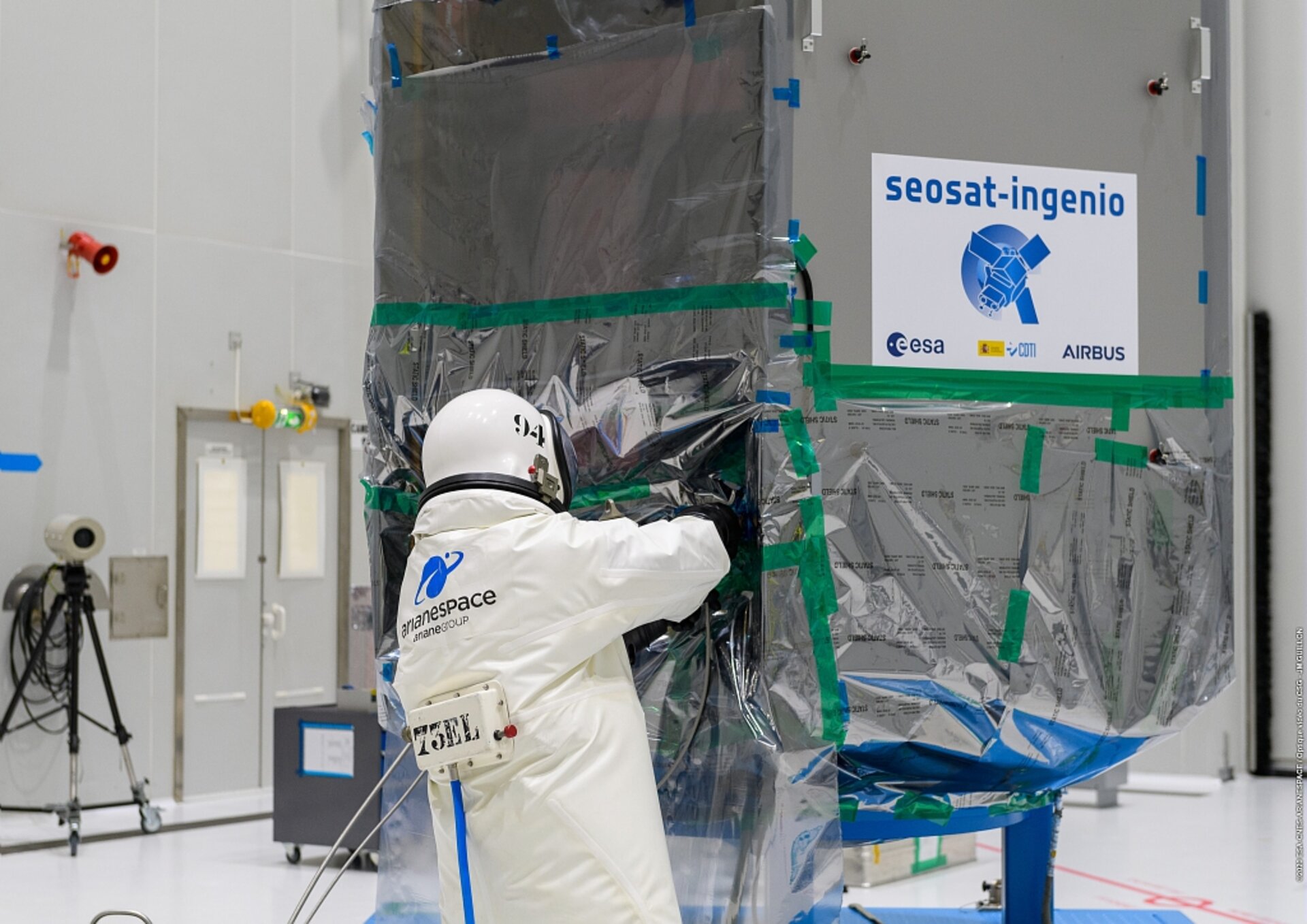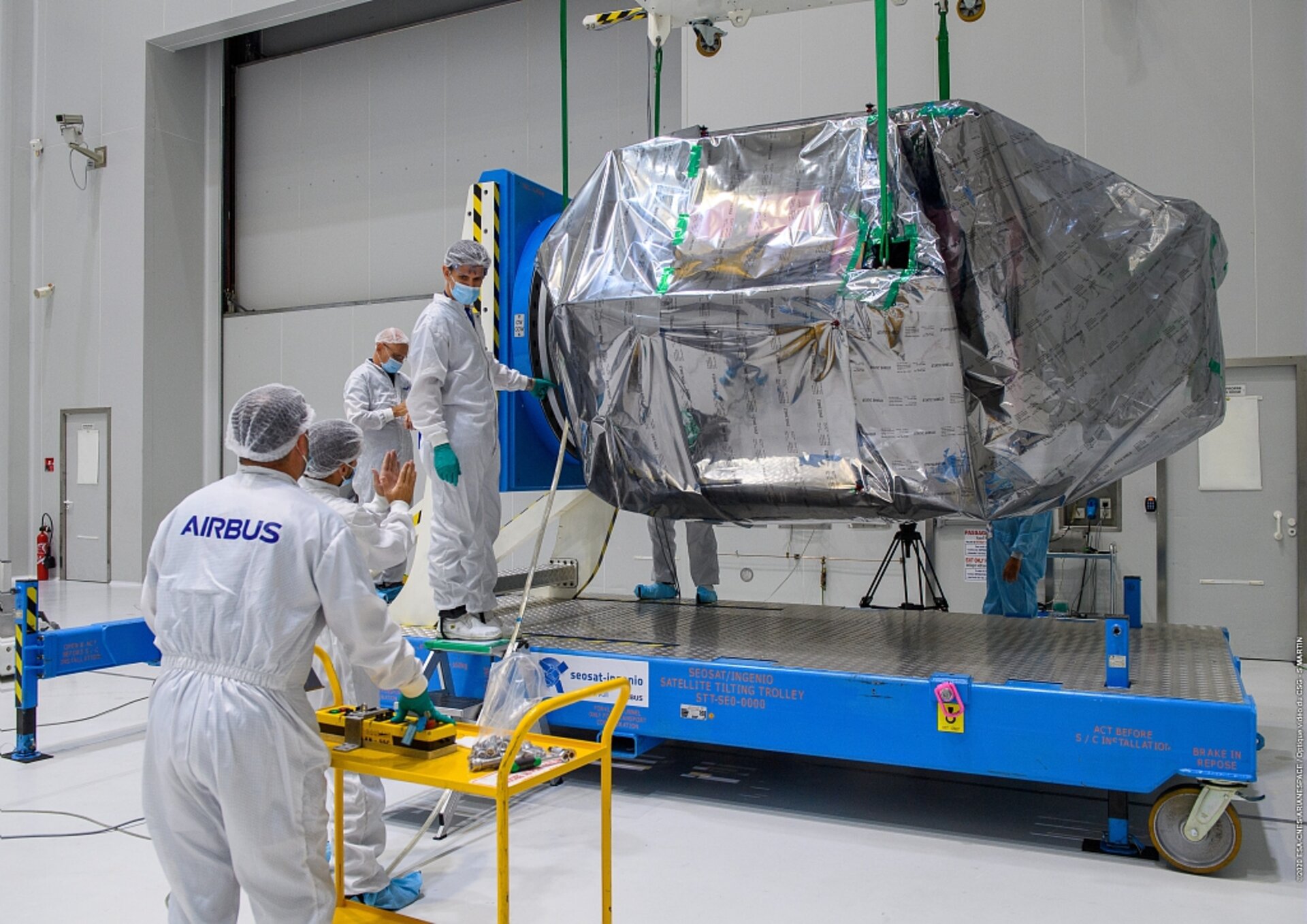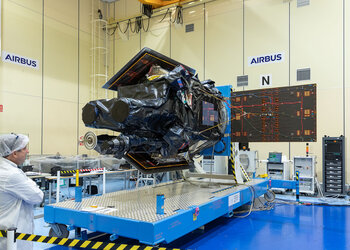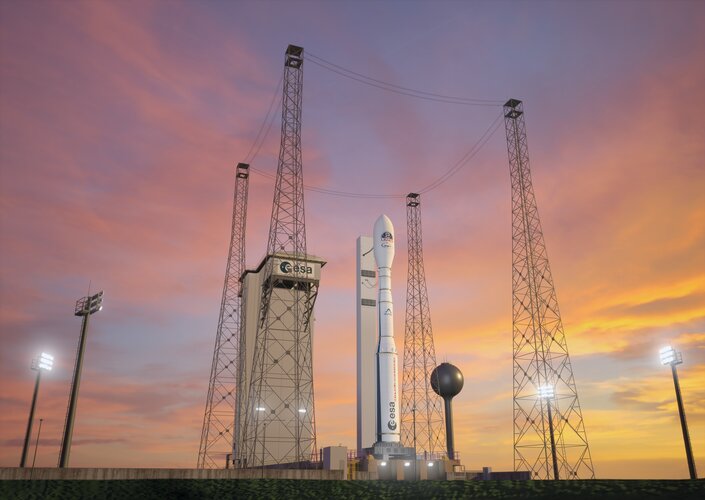SEOSAT-Ingenio: fully loaded
Preparations are well on track for the upcoming launch of SEOSAT-Ingenio – the Spanish high-resolution land imaging mission – scheduled to launch from Europe’s spaceport in French Guiana next month.
SEOSAT-Ingenio arrived safely at the Guiana Space Centre on 25 September, where it was then transferred to the Payload Preparation Complex along with its co-passenger, the CNES French space agency’s Taranis satellite.
Since then, the dedicated team has successfully completed a series of inspections and health checks that confirmed the satellite is in good shape. This included several ‘leak tests’ where the propulsion module’s tank, valves and thrusters were tested at the ‘maximum expected over pressure’ to verify their performances.
Since then, SEOSAT-Ingenio was transported to the Filling Hall where it was loaded with around 80 kg of hydrazine fuel and was pressurised with helium gas to avoid the sloshing of the liquid during launch and flight. The satellite was then switched on – confirming the successful completion of its fuelling.
ESA’s Gianfranco Spinella commented, “The execution of the fuelling and pressurisation operations were concluded with a successful switch-on of the spacecraft, which is yet another major milestone for this project. The amount of loaded propellant will cover SEOSAT-Ingenio for its 10 years of operations, three years more than its nominal mission lifetime.
“These operations have completed the SEOSAT-Ingenio autonomous preparation phase. We are now looking forward to initiate the next phase of combined operations with the launcher next week.”
SEOSAT–Ingenio carries a state-of-the-art dual camera that has the ability to image Earth’s land with a resolution of 2.5 m. By imaging Earth’s land in remarkable detail, the satellite will benefit society through various disciplines including cartography, monitoring land use, urban development and water management.
With its capability to look sideways, it can access any point on Earth within three days, and will be used to help map natural disasters such as floods, wildfires and earthquakes – as well as help with one of humankind’s biggest challenges: climate change.
While SEOSAT–Ingenio is a Spanish national mission, it is the result of an international collaborative effort. The mission is funded by Spain’s Centre for the Development of Industrial Technology (CDTI) of the Ministry of Science and Innovation, but developed by ESA in the context of the European Earth Observation Architecture.
Follow updates on SEOSAT-Ingenio on the dedicated blog: https://blogs.esa.int/eolaunches/















